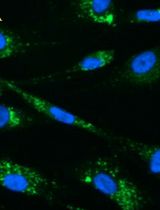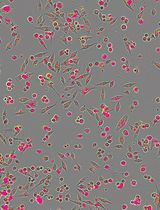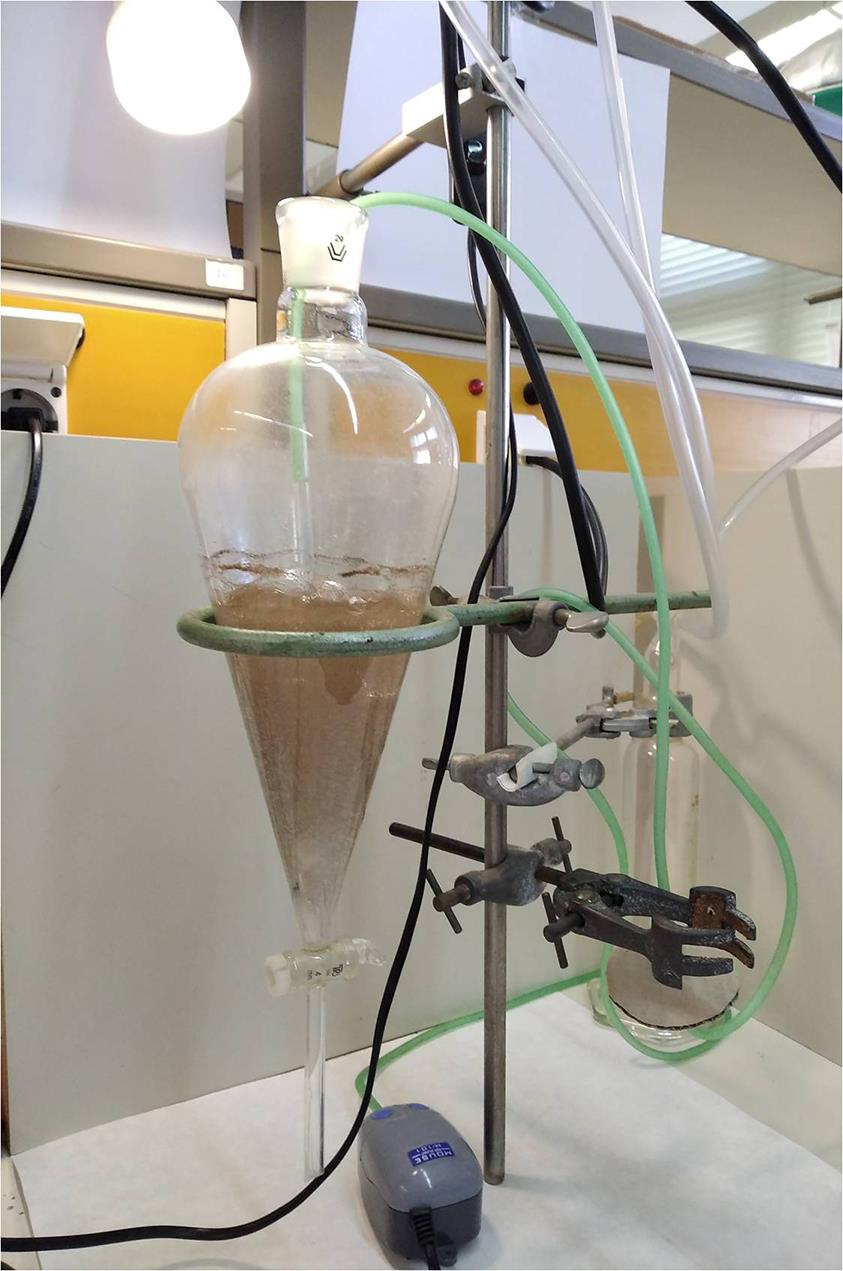- Submit a Protocol
- Receive Our Alerts
- Log in
- /
- Sign up
- My Bio Page
- Edit My Profile
- Change Password
- Log Out
- EN
- EN - English
- CN - 中文
- Protocols
- Articles and Issues
- For Authors
- About
- Become a Reviewer
- EN - English
- CN - 中文
- Home
- Protocols
- Articles and Issues
- For Authors
- About
- Become a Reviewer
Evaluation of Toxicity with Brine Shrimp Assay
Published: Vol 11, Iss 2, Jan 20, 2021 DOI: 10.21769/BioProtoc.3895 Views: 8003
Reviewed by: Alexandros AlexandratosPooja VermaAnonymous reviewer(s)

Protocol Collections
Comprehensive collections of detailed, peer-reviewed protocols focusing on specific topics
Related protocols

Quantification of Autophagosomes in Human Fibroblasts Using Cyto-ID® Staining and Cytation Imaging
Barbara Hochecker [...] Jörg Bergemann
Jul 5, 2024 1507 Views

Microfluidic Cultures of Basal Forebrain Cholinergic Neurons for Assessing Retrograde Cell Death by Live Imaging
Srestha Dasgupta [...] Wilma J. Friedman
Jan 5, 2025 1629 Views

Real-time IncuCyte® Assay for the Dynamic Assessment of Live and Dead Cells in 2D Cultures
Arlene K. Gidda [...] Sharon M. Gorski
Feb 5, 2025 2560 Views
Abstract
The in vivo toxicity of new metallodrugs either as Small Bioactive Molecules (SBAMs) or Conjugates of Metals with Drugs (CoMeDs) or their hydrogels such as with hydroxyethyl-methacrylate (HEMA) (pHEMA@SBAMs or pHEMA@CoMeDs) are evaluated by the brine shrimp assay. Thus individuals of Artemia salina larvae are incubated in saline solutions with SBAMs, CoMeDs, pHEMA@SBAMs or pHEMA@CoMeDs or without for 24 h. The toxicity is then determined in terms of the mortality rate of brine shrimp larvae. Brine shrimp assay is a low cost, safe, no required feeding during the assay, while it requiring only a small amount of the tested agent.
Keywords: Bioinorganic ChemistryBackground
The approval of cisplatin in the clinical treatment of cancer boosted the development of the field of bioinorganic chemistry or medicinal inorganic chemistry. The discovery of new active metallodrugs requires the elucidation of their mode of action. Thus, for example, the targeted delivery of antiproliferative metallodrugs to malignant cells, the activation of inorganic prodrugs and the advent of nanoscience have prompted the scientists to spotlight the toxicity of them (Metzler-Nolte and Guo, 2016). Especially, the research on the design and development of new metallodrugs (either as Small Bioactive Molecules (SBAMs) or Conjugates of Metals with Drugs (CoMeDs)), includes their in vitro testing against numerous cancerous cell types and their in vivo toxicity evaluation towards model organisms (Sainis et al., 2016, Stathopoulou et al., 2018; Banti et al., 2016, 2018, 2019 and 2020; Chrysouli et al., 2018a, 2018b and 2020; Latsis et al., 2018, Milionis et al., 2018; Karetsi et al., 2019; Polychronis et al., 2019; Ketikidis et al., 2020; Rossos et al., 2020). For example: When Artemia salina larvae were incubated with the copper(II) complex of amantadine (AdNH2), with formula {[AdNH3+]•[CuCl3]-} (CA) (Banti et al., 2020) or the corresponding one of the silver(I) with penicillin G (PenH) [Ag(pen)(CH3OH)]2 (PenAg) (Ketikidis et al., 2020) for 24 h, the percentages of survival of brine shrimp larvae at 30, 60, 90, 120 and 150 μΜ; of CA were (78.3±10.2), (85.4±6.5), (87.9±9.6), (82.6 ±10.8) and (76.9±11.9) %, respectively. The survival rate of brine shrimp larvae at the concentrations of 150 μΜ, is similar with the corresponding one of the non-treated larvae, suggesting its non toxic behavior. In case of PenAg, the percentage of survival of brine shrimp larvae at 37, 74.5, 150, 220 and 1050 μΜ are (94.7±2.5), (87.3±5.0) (82.6±4.7), (63.4±6.1) and (11.0±5.0) %, respectively, indicating toxicity at the concentration of 1050 μΜ. Moreover, in the case of the hydrogel which derives by the dispersion of the cluster {[Ag6(μ3-HMNA)4(μ3-MNA)2]2−•[(Et3NH)+]2•(DMSO)2•(H2O)} (AGMNA), (H2MNA= 2-thio-nicotinic acid), in polyhydroxyethyl-methacrylate (pHEMA) (pHEMA@AGMNA-1) (Rossos et al., 2020), no mortality rate of brine shrimp larvae was found, upon their incubation with pHEMA@AGMNA-1 for 2, 4, 6, 8 and 24 h, suggesting the non-toxic behavior of the material.
Artemia salina is a zooplanktonic crustacean found in a variety of seawater systems (lakes, oceans) and it is one of the most popular live foods for many fishes and aquatic invertebrates (Zhu et al., 2018). A. salina interacts with the aquatic environment and faces high risk exposure to contaminants (Zhu et al., 2018). The nauplii of the brine shrimp are considered as a simple and suitable model system for acute toxicity tests (Trompeta et al., 2019). The nauplii feature a higher sensitivity to toxic agents compared to the adult Artemia (Trompeta et al., 2019).
A. salina is a popular model organism for toxicological tests, due to its short life-cycle, ease of culture, high offspring production, the commercial availability of its cysts, year-round availability, low cost, safety, no required feeding during the assay, requiring only a small amount of the tested agent (Ates et al., 2013; da Silveira Carvalho et al., 2017; Zhu et al., 2018). Moreover, many endpoints can be selected for toxicological evaluation, including hatching, mortality, swimming, morphology and biomarkers (Živković et al., 2016; Zhu et al., 2018).
The assay correlated with the toxicity data of rodents and humans and shows a good correlation with cytotoxicity tests making these measurements suitable as preliminary results (Živković et al., 2016; da Silveira Carvalho et al., 2017). Artemia species have been used in testing acute toxicity of toxic materials, such as heavy metals and pesticides (Ates et al., 2013), nanoparticles (Zhu et al., 2018), bioactive molecules, natural extracts and metal complexes (da Silveira Carvalho et al., 2017).
Materials and Reagents
Brine shrimp assay
Latex gloves (KCWW, Kimberly-Clark, catalog number: 57330 )
24-well plate, sterile and tissue-treated (Corning, catalog number: 3526 )
Pipette tips
Brine shrimp eggs (Artemia salina) (were purchase from Ocean Nutrition) and the Pure Artemia Cysts are coming from the Great Salt Lake and therefore geographical variations are not affecting the assay
Sodium chloride (NaCl) (Sigma-Aldrich, catalog number: S7653 )
Sea salt (Tropic Marin)
Equipment
2 L separating funnel with 24/29 joint
Stereo microscope Stemi 2000 (ZEISS)
Air Pump (Mouse M-106, two outputs 4w)
Soft light source such as fluorescent lamps 7w
Incubator
Note: Any incubator is fine if it maintains 25 °C to 37 °C, 50-60% humidity and 12 h day lighting/ 12 h dark for 24 h.
Software
Microsoft Office Excel
Procedure
1 g cysts of Artemia salina are soaked in 500 ml natural fresh water for one hour in a 2 L separating funnel. The funnel should not be covered on top.
17 g of sea salt are dissolved in the 500 ml natural freshwater water above.
Facilitate the funnel with good aeration using an air pump at room temperature and under continuous illumination for 48 h (Figure 1).

Figure 1. The nauplii incubation apparatusAfter 48 h hatching, the nauplii released from the egg shells.
Collect nauplii at the bright side of the funnel (near the light source) by using a micropipette.
Transfer the separated larvae above in a small beaker containing NaCl 0.9%.
Introduce an aliquot (0.5 ml) from a small beaker about 10 to 20 nauplii to each well of 24-well plate. The total volume of the well of 24-well plate will be 1ml NaCl 0.9%.
Test the metallodrug at three concentrations, with a range of, for example 0.05, 0.5 and 5 μΜ with three replicates per concentration. The IC50 value of the metallodrug towards the cancerous cell lines should be in this range of the tested concentrations. When an antibacterial or a fungicidal compound is tested, then the tested concentration should be the MIC and 2× MIC, 4× MIC values. In the case of hydrogel materials, discs with a diameter of 9 mm were added to each well.
The final volume of each well is 1 ml with NaCl 0.9% and the presence of the metallodrug.
Maintain the plates at 25°C in an incubator.
Examine, after 24 h the brine shrimps, using a stereoscope.
Larvae were considered alive if they exhibit internal or external movement during 10 s of observation.
Repeat each experiment three times.
Note: During the decapsulation of Artemia cyst, continuous aeration, using an air pump, should be done for proper hatching of the embryo, at 25 °C with simultaneously continuous illumination. For the acceptability of the test, up to 10% of mortality was admitted in the control.
Data analysis
Representative data
Selected icons of hatching eggs, live and dead nauplii brine shrimps which were treated with an agent are shown in Figure 2.

Figure 2. Selected icons of hatching eggs (A), alive (B) and dead (C) nauplii brine shrimps which were treated with a metallodrug
Observed larvae, and the dead larvae are considered those that did not exhibit any internal or external movement in 10 s of observation.
Count numbers of dead larvae.
The (%) mortality of Artemia salina larvae was calculated according to Abbott 1987:
M(% vs. control)=[(LC−LT)/LC]×100
where M is mortality; LC, living nauplii in the control after 24 h; LT, living nauplii with the tested agent after 24 h.
Acknowledgments
The protocol for Artemia salina assay was adapted and modified from a previous study (Syahmiet al., 2010; da Silveira Carvalho et al., 2017 ; Rahmanet al., 2018; Trompeta et al., 2019 ). It was described in Banti et al. (2020), Ketikidis et al. (2020) and Rossos et al. (2020). This research has been co-financed by the European Union and Greek national funds through the Operational Program Competitiveness, Entrepreneurship and Innovation, under the call RESEARCH–CREATE–INNOVATE (project code: T1EDK-02990) and it has been financially supported by the State Scholarships Foundation (IKϒ) (Project No. 2019-050-0503-17816), through the Operational Programme “Human Resources Development, Education and Lifelong Learning” in the context of the project “Reinforcement of Postdoctoral Researchers - 2nd Cycle” (MIS-5033021), which is co financed by Greece and the European Union (European Social Fund- ESF). C.N.B. and S.K.H. are thankful to the COST Action CA17104 "New diagnostic and therapeutic tools against multidrug resistant tumors" members for the stimulating discussions. S.K.H. acknowledges the Oncology Department of Novartis Hellas S.A.C.I. for the financial support (Project No. 82819).
Competing interests
The authors declare no conflicts of interest or competing interests.
References
- Abbott, W.S. (1987). A method of computing the effectiveness of an insecticide. J Am Mosq Control Assoc 3: 302-303.
- Ates, M., Daniels, J., Arslan, Z., Farah, I. O. and Rivera, H. F. (2013). Comparative evaluation of impact of Zn and ZnO nanoparticles on brine shrimp(Artemia salina) larvae: effects of particle size and solubility on toxicity. Environ Sci Process Impacts 15(1): 225-233.
- Banti, C. N., Kourkoumelis, N., Hatzidimitriou, A. G., Antoniadou, I., Dimou, A., Rallis, M., Hoffmann, A., Schmidtke, M., McGuire, K., Busath, D., Kolocouris, A. and Hadjikakou, S. K. (2020). Amantadine copper(II) chloride conjugate with possible implementation in influenza virus inhibition. Polyhedron 185: 114590.
- Banti, C. N., Hatzidimitriou, A. G., Kourkoumelis, N. and Hadjikakou, S. K. (2019). Diclofenac conjugates with biocides through silver(I) ions(CoMeD's); Development of a reliable model for the prediction of anti-proliferation of NSAID's-silver formulations. J InorgBiochem 194: 7-18.
- Banti, C. N., Papatriantafyllopoulou, C., Tasiopoulos, A. J. and Hadjikakou, S. K. (2018). New metalo-therapeutics of NSAIDs against human breast cancer cells. Eur J Med Chem 143: 1687-1701.
- Banti, C. N., Papatriantafyllopoulou, C., Manoli, M., Tasiopoulos, A. J. and Hadjikakou, S. K. (2016). Nimesulide Silver Metallodrugs, Containing the Mitochondriotropic, Triaryl Derivatives of Pnictogen; Anticancer Activity against Human Breast Cancer Cells. Inorg Chem 55(17): 8681-8696.
- Chrysouli, M. P., Banti, C. N., Kourkoumelis, N., Moushi, E. E., Tasiopoulos, A. J., Douvalis, A., Papachristodoulou, C., Hatzidimitriou, A. G., Bakas, T. and Hadjikakou, S. K. (2020). Ciprofloxacin conjugated to diphenyltin(IV): a novel formulation with enhanced antimicrobial activity. Dalton Trans 49(33): 11522-11535.
- Chrysouli, M. P., Banti, C. N., Kourkoumelis, N., Panayiotou, N., Markopoulos, G. S., Tasiopoulos, A. J. and Hadjikakou, S. K. (2018). Chloro(triphenylphosphine)gold(I) a forefront reagent in gold chemistry as apoptotic agent for cancer cells. J InorgBiochem 179: 107-120.
- Chrysouli, M. P., Banti, C. N., Milionis, I., Koumasi, D., Raptopoulou, C. P., Psycharis, V., Sainis, I. and Hadjikakou, S. K. (2018). A water-soluble silver(I) formulation as an effective disinfectant of contact lenses cases. Mater Sci Eng C Mater Biol Appl 93: 902-910.
- da Silveira Carvalho, J. M., de Morais Batista, A. H., Nogueira, N. A. P., Holanda, A. K. M., de Sousa, J. R., Zampieri, D., Bezerra, M. J. B., Stefânio Barreto, F., de Moraes, M. O., Batista, A. A., Gondim, A. C. S., de F. Paulo, T., de França Lopes, L. G. and Sousa, E. H. S. (2017). A biphosphinic ruthenium complex with potent anti-bacterial and anti-cancer activity. New J Chem 41(21): 13085-13095.
- Karetsi, V. A., Banti, C. N., Kourkoumelis, N., Papachristodoulou, C., Stalikas, C. D., Raptopoulou, C. P., Psycharis, V., Zoumpoulakis, P., Mavromoustakos, T., Sainis, I. and Hadjikakou, S. K. (2019). An Efficient Disinfectant, Composite Material{SLS@[Zn3(CitH)2]} as Ingredient for Development of Sterilized and Non Infectious Contact Lens. Antibiotics(Basel) 8(4): 213.
- Ketikidis, I., Banti, C. N., Kourkoumelis, N., Tsiafoulis, C. G., Papachristodoulou, C., Kalampounias, A. G. and Hadjikakou, S. K. (2020). Conjugation of Penicillin-G with Silver(I) Ions Expands Its Antimicrobial Activity against Gram Negative Bacteria. Antibiotics(Basel) 9(1): 25.
- Latsis, G. K., Banti, C. N., Kourkoumelis, N., Papatriantafyllopoulou, C., Panagiotou, N., Tasiopoulos, A., Douvalis, A., Kalampounias, A. G., Bakas, T. and Hadjikakou, S. K. (2018). Poly Organotin Acetates against DNA with Possible Implementation on Human Breast Cancer. Int J Mol Sci 19(7): 2055.
- Metzler-Nolte, N. and Guo, Z. (2016). Themed Issue on"Metallodrugs: Activation, Targeting, and Delivery. Dalton Trans 45(33): 12965.
- Milionis, I., Banti, C. N., Sainis, I., Raptopoulou, C. P., Psycharis, V., Kourkoumelis, N. and Hadjikakou, S. K. (2018). Silver ciprofloxacin(CIPAG): a successful combination of chemically modified antibiotic in inorganic-organic hybrid. J Biol Inorg Chem 23(5): 705-723.
- Polychronis, N. M., Banti, C. N., Raptopoulou, C. P., Psycharis, V., Kourkoumelis, N. and Hadjikakou, S. K. (2019). Non steroidal anti-inflammatory drug(NSAIDs) in breast cancer chemotherapy; antimony(V) salicylate a DNA binder. InorganicaChimica Acta 489: 39-47.
- Rahman, K., Khan, S. U., Fahad, S., Shinwari, Z. K., Khan, D., Kamal, S., Ullah, I., Anjum, S. I., Man, S., Khan, A. J., Khan, W. U., Khan, M. H. U., Jan, M., Adnan, M. and Noor, M. (2018). In vitro biological screening of a critically endangered medicinal plant, Atropa acuminata Royle Ex Lindl of north western Himalaya. Sci Rep 8(1): 11028.
- Syahmi, A. R. M.; Vijayarathna, S.; Sasidharan, S.; Latha, L.Y.; Kwan, Y. P.; Lau, Y. L.; Shin, L. N.; Chen, Y. Acute Oral Toxicity and Brine Shrimp Lethality of Elaeis guineensis Jacq.,(Oil Palm Leaf) Methanol Extract. Molecules 2010, 15, 8111-8121.
- Rossos, A. K., Banti, C. N., Kalampounias, A. G., Papachristodoulou, C., Kordatos, K., Zoumpoulakis, P., Mavromoustakos, T., Kourkoumelis, N. and Hadjikakou, S. K. (2020). pHEMA@AGMNA-1: A novel material for the development of antibacterial contact lens. Mater Sci Eng C 111: 110770.
- Sainis, I., Banti, C. N., Owczarzak, A. M., Kyros, L., Kourkoumelis, N., Kubicki, M. and Hadjikakou, S. K. (2016). New antibacterial, non-genotoxic materials, derived from the functionalization of the anti-thyroid drug methimazole with silver ions. J Inorg Biochem 160114-124.
- Stathopoulou, M.E. K., Banti, C. N., Kourkoumelis, N., Hatzidimitriou, A. G., Kalampounias, A. G. and Hadjikakou, S. K. (2018). Silver complex of salicylic acid and its hydrogel-cream in wound healing chemotherapy. J Inorg Biochem 18141-55.
- Trompeta, A.F., Preiss, I., Ben-Ami, F., Benayahu, Y. and Charitidis, C. A. (2019). Toxicity testing of MWCNTs to aquatic organisms. RSC Advances 936707-36716.
- Zhu, B., Zhu, S., Li, J., Hui, X. and Wang, G.-X. (2018). The developmental toxicity, bioaccumulation and distribution of oxidized single walled carbon nanotubes in Artemia salina. Toxicology Research 7(5): 897-906.
- Živković, M. B., Matić, I. Z., Rodić, M. V., Novaković, I. T., Sladić, D. M. and Krstić, N. M. (2016). Synthesis, characterization and in vitro cytotoxic activities of new steroidal thiosemicarbazones and thiadiazolines. RSC Advances 6(41): 34312-34333.
Article Information
Copyright
© 2021 The Authors; exclusive licensee Bio-protocol LLC.
How to cite
Banti, C. N. and Hadjikakou, S. K. (2021). Evaluation of Toxicity with Brine Shrimp Assay. Bio-protocol 11(2): e3895. DOI: 10.21769/BioProtoc.3895.
Category
Cancer Biology > Cancer biochemistry > Genotoxicity
Microbiology > Antimicrobial assay > Killing assay
Cell Biology > Cell viability > Cell death
Do you have any questions about this protocol?
Post your question to gather feedback from the community. We will also invite the authors of this article to respond.
Tips for asking effective questions
+ Description
Write a detailed description. Include all information that will help others answer your question including experimental processes, conditions, and relevant images.
Share
Bluesky
X
Copy link










